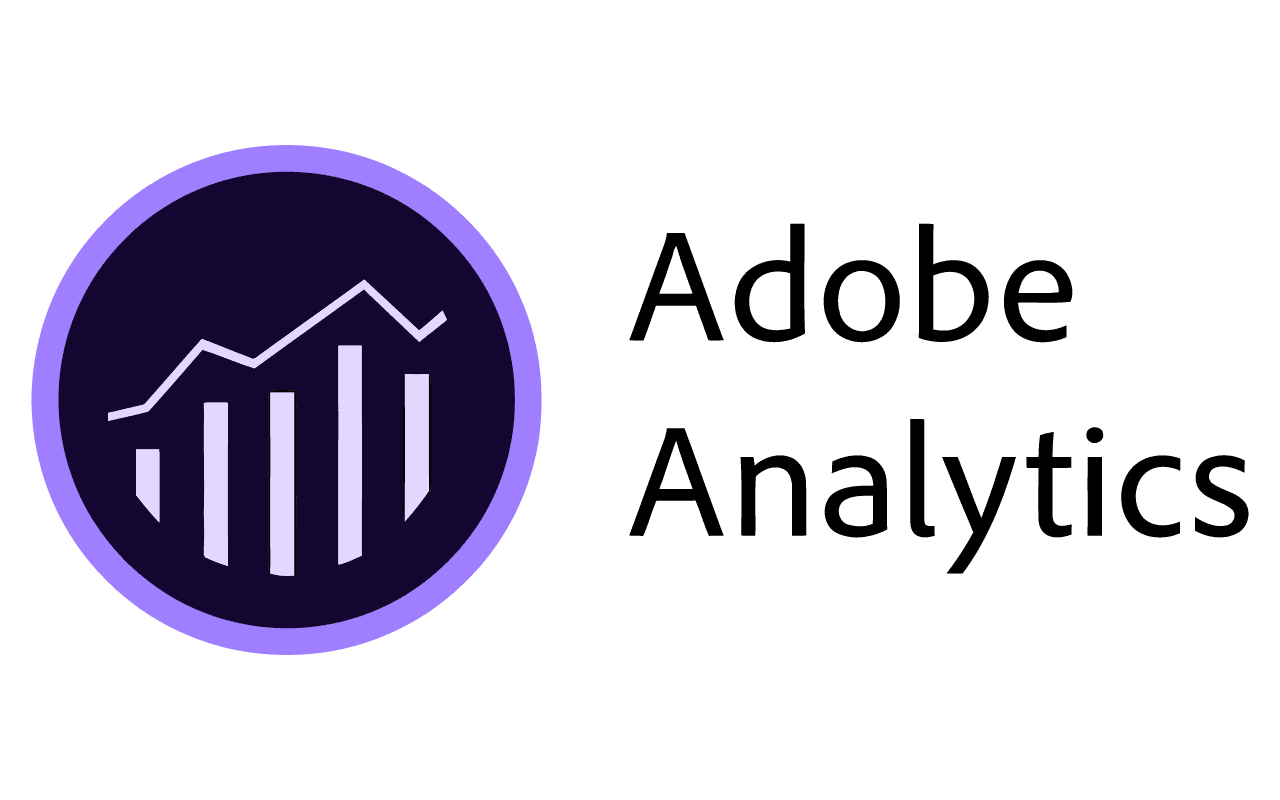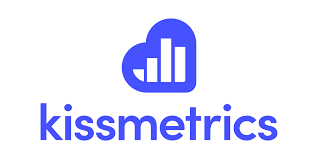Choosing the right marketing analytics tool can feel like navigating a maze in the dark. Every turn promises a new feature, a unique benefit, or a potential pitfall. It’s a decision that can significantly influence your business’s growth trajectory. In the digital era, where data is as precious as gold, picking the right tool to mine insights is crucial. Today, we’re putting two giants under the microscope: Adobe Analytics and Kissmetrics. Both have their legions of fans and their unique selling propositions. But which one is the right fit for you? Let’s dive deep, beyond the surface-level features, and really dissect what makes these tools tick.
| Adobe Analytics | Kissmetrics |
|---|---|
 |  |
| G2 Score – 4.1 out of 5 stars | G2 Score – 4.1 out of 5 stars |
| TrustRadius Score – 8.2 out of 10 | TrustRadius Score – 9.6 out of 10 |
Understanding Your Needs
Before we pit Adobe Analytics against Kissmetrics, it’s essential to understand what you’re looking for in a marketing analytics tool. Do you value depth and granularity of data, or is user-friendliness and simplicity more your speed? Perhaps you’re looking for specific integrations with other tools in your marketing stack? Keep these questions in mind as we explore our first area of comparison.
Data Collection and Integration Capabilities
One of the fundamental differences between Adobe Analytics and Kissmetrics lies in their approach to data collection and integration with other platforms.
Adobe Analytics: The Deep Diver
Adobe Analytics is often hailed as the more powerful tool, especially for larger enterprises or those with complex data needs. It shines in its ability to collect and process vast amounts of data in real-time, offering deep insights into customer behavior across various channels. Its integration capabilities are equally impressive, seamlessly connecting with other Adobe products such as Adobe Experience Manager and Adobe Campaign. This interconnectedness allows for a unified view of the customer journey, making it easier to tailor experiences that resonate on an individual level.
However, the depth and breadth of Adobe Analytics come with a steep learning curve. It’s not uncommon for businesses to require dedicated specialists to navigate its complexities. Moreover, the price tag can be a significant consideration, particularly for smaller businesses or those just beginning to scale.
Kissmetrics: The User-Friendly Navigator
On the other side of the ring, we have Kissmetrics, known for its user-friendly interface and straightforward approach to analytics. While it may not boast the same level of data granularity as Adobe Analytics, Kissmetrics offers powerful insights into customer behavior, conversion tracking, and user engagement. Its real strength lies in its simplicity and the ability to quickly set up, interpret, and act on data without needing a degree in data science.
Kissmetrics also excels in its integration with other tools, especially within the e-commerce and email marketing spheres. Platforms like Shopify, WooCommerce, and MailChimp can easily feed data into Kissmetrics, providing a comprehensive overview of how marketing efforts translate into sales and engagement.
Choosing Based on Integration Needs
If your organization relies heavily on other Adobe products and requires in-depth, granular data analysis, Adobe Analytics might be the way to go. Its integration capabilities within the Adobe ecosystem allow for a seamless flow of data, making it a powerhouse for those who can navigate its complexities.
Conversely, if you’re looking for an analytics tool that’s easy to set up, integrates well with popular marketing platforms, and provides clear, actionable insights without a steep learning curve, Kissmetrics might be your best bet. It’s particularly suited for small to medium-sized businesses or those looking for simplicity without sacrificing depth.
In this first round of comparison, it’s not about which tool is objectively better; it’s about which one better aligns with your specific needs and capabilities. Whether you lean towards the deep-diving capabilities of Adobe Analytics or the streamlined simplicity of Kissmetrics, the right choice depends on your unique business context.
User Experience and Accessibility
Diving deeper into our comparison, the next crucial aspect to consider is the user experience (UX) and accessibility of Adobe Analytics and Kissmetrics. After all, the value of a tool isn’t just in the data it can gather but also in how easily you can navigate, interpret, and leverage this data to make informed decisions.
Adobe Analytics: The Complex Powerhouse
Adobe Analytics is often likened to a Swiss Army knife – packed with features and capabilities but can be overwhelming for the uninitiated. Its interface is robust, offering a wide array of reports, customization options, and data visualization tools. For organizations with dedicated analytics teams or individuals with a deep understanding of data analysis, Adobe Analytics provides an unparalleled playground to explore nuanced insights and complex data patterns.
However, this complexity can be a double-edged sword. New users might find the platform daunting, with its steep learning curve and somewhat less intuitive interface. The sheer volume of options and settings can lead to analysis paralysis, where the difficulty in understanding the platform’s capabilities impedes effective decision-making.
Kissmetrics: The Streamlined Experience
Kissmetrics, in contrast, prioritizes a streamlined user experience. Its interface is designed with clarity and simplicity in mind, making it accessible even to those with minimal analytics experience. This focus on usability does not mean Kissmetrics sacrifices depth for simplicity; rather, it cleverly condenses complex data into more digestible insights without overwhelming the user.
One of the standout features of Kissmetrics is its approach to data visualization. The platform offers a range of easy-to-understand charts, graphs, and reports that make it easier to grasp the implications of the data. This focus on accessibility extends to its setup process, which is straightforward, allowing businesses to hit the ground running with minimal setup time.
Making the Right Choice for Your Team
The decision between Adobe Analytics and Kissmetrics, when it comes to user experience and accessibility, largely depends on your team’s composition and expertise. If your team includes experienced data analysts who can harness the full power of a more complex system, and you need the depth of insights that Adobe Analytics offers, it may be the better choice. The investment in time and resources to master Adobe Analytics can pay off in the form of detailed, actionable insights that can drive your marketing strategy.
Conversely, if your team values agility, ease of use, and quick insights to inform decisions without the need for extensive training, Kissmetrics emerges as the clear winner. Its user-friendly interface and straightforward reporting make it an ideal tool for teams looking to quickly understand customer behavior and adjust their strategies accordingly.
Ultimately, the choice between Adobe Analytics and Kissmetrics in terms of user experience and accessibility should align with your team’s capabilities and how you prefer to work. Do you thrive on deep, detailed data analysis, or do you prefer quick, actionable insights to drive decisions? Your answer to this question will guide you to the right tool for your needs.
Cost and Return on Investment (ROI)
When it comes to selecting a marketing analytics tool, the decision often boils down to not just features and usability, but also cost and the potential return on investment (ROI). Let’s break down how Adobe Analytics and Kissmetrics stack up in terms of pricing structures and what you can expect in terms of ROI.
| Adobe Analytics | Adobe Analytics does not publicly disclose its pricing, as it tailors costs to each customer’s specific needs. However, it’s suggested that prices can range from $48,000 to $350,000 per year. |
| Kissmetrics | As of the latest information, Kissmetrics appears to have been absorbed by Neil Patel Digital, and specific pricing for Kissmetrics services is not listed. It’s advisable to contact them directly for details. |
Adobe Analytics: Premium Pricing for Comprehensive Insights
Adobe Analytics is part of the Adobe Experience Cloud, and its pricing reflects its positioning as a premium, enterprise-level tool. While Adobe does not publicly list specific pricing for Adobe Analytics, it is widely known that the cost can be significant, often requiring a custom quote based on the specific needs and scale of the business. This pricing structure includes access to a suite of powerful analytics tools, comprehensive data insights, and the integration capabilities within the Adobe ecosystem.
The high cost of Adobe Analytics means that it’s typically a better fit for medium to large businesses or enterprises with significant digital footprints and the need for deep data analysis. These organizations are more likely to have the budget to justify the investment and the capacity to leverage the complex functionalities offered by Adobe Analytics to their full extent.
The ROI for Adobe Analytics comes from its ability to provide detailed insights that can drive significant improvements in customer experience, marketing efficiency, and ultimately, revenue growth. However, realizing this ROI requires not just the financial investment in the software but also the investment in skilled personnel to interpret the data and implement findings effectively.
Kissmetrics: Cost-Effective with a Focus on Actionable Insights
Kissmetrics presents a more transparent and accessible pricing model, with plans designed to cater to the needs of small to medium-sized businesses. The pricing tiers are published on their website, offering a range of options based on the features and scale required. This clear, upfront pricing makes it easier for businesses to understand what they’re getting and to calculate the potential ROI.
The lower price point of Kissmetrics, compared to Adobe Analytics, makes it an attractive option for smaller businesses or those just beginning to focus on data-driven marketing. The ROI from Kissmetrics is derived from its ability to provide actionable insights that can directly impact sales and customer engagement, without the need for a large, specialized team to manage and interpret the data.
Evaluating ROI: What’s Best for Your Business?
When considering the ROI of Adobe Analytics and Kissmetrics, it’s essential to look beyond just the initial cost. For businesses with the resources to invest in Adobe Analytics, the ROI can be substantial, thanks to the depth and breadth of insights available. However, this is contingent on having the expertise to leverage these insights effectively.
For smaller businesses or those with more limited resources, Kissmetrics offers a compelling value proposition. Its lower cost, coupled with its focus on delivering straightforward, actionable insights, can help drive immediate improvements in marketing strategies and customer engagement, leading to a quick and tangible ROI.
Ultimately, the choice between Adobe Analytics and Kissmetrics should be informed by a careful consideration of your business’s size, budget, and capacity to utilize the data insights provided by these tools. It’s not just about the cost of the tool itself but the broader investment in resources and the potential for these tools to drive meaningful improvements in your marketing efforts and bottom line.

Related: Check out our free SEO suite

Customization and Flexibility
In the world of marketing analytics, the ability to customize and adapt the tool to fit your unique business needs can be a game-changer. This customization can range from the ability to track specific metrics, create custom reports, or integrate with other tools and platforms. Let’s compare Adobe Analytics and Kissmetrics in terms of their customization capabilities and overall flexibility.
Adobe Analytics: The Customization Powerhouse
Adobe Analytics stands out for its extensive customization options. It allows users to tailor nearly every aspect of their analytics experience, from creating bespoke metrics and dimensions to customizing dashboards and reports to fit specific business needs. This level of customization is particularly valuable for large enterprises or businesses with unique, complex data requirements that off-the-shelf solutions cannot meet.
Furthermore, Adobe Analytics offers robust API access, enabling businesses to integrate their analytics with virtually any other tool or system they use. This flexibility ensures that Adobe Analytics can act not just as a standalone analytics platform but as a central part of a broader, integrated data ecosystem. This capability is crucial for businesses looking to automate workflows, enhance data accuracy, and ensure a seamless flow of information across platforms.
However, it’s worth noting that leveraging the full extent of Adobe Analytics’ customization and integration capabilities often requires a high level of technical expertise. Businesses may need to invest in training or hire specialists to make the most of what Adobe Analytics has to offer.
Kissmetrics: Simplified Customization for Actionable Insights
Kissmetrics, while not as extensively customizable as Adobe Analytics, still offers a significant degree of flexibility tailored to the needs of small to medium-sized businesses. It provides a range of customization options, including the ability to track custom events and properties that are most relevant to your specific business model and goals.
One of Kissmetrics’ strengths is its ability to offer valuable insights without requiring extensive customization. The platform is designed to surface actionable data with minimal setup, making it an excellent option for businesses that lack the resources for a dedicated data analysis team. However, Kissmetrics also supports custom data points and segmentation, allowing businesses to drill down into the metrics that matter most to them.
While Kissmetrics may not offer the same level of API access and integration capabilities as Adobe Analytics, it still integrates well with a variety of tools, especially within the eCommerce and email marketing ecosystems. This level of integration is often sufficient for the platform’s target audience, providing the flexibility they need without overwhelming complexity.
Making the Best Choice for Customization Needs
Choosing between Adobe Analytics and Kissmetrics on the basis of customization and flexibility comes down to your business’s specific needs and resources. If you require extensive customization, have a complex data ecosystem, and possess the technical resources to leverage these capabilities, Adobe Analytics is likely the better choice. Its ability to tailor every aspect of the analytics experience can provide deep, nuanced insights that can drive strategic decisions.
Conversely, if you’re looking for a tool that balances flexibility with ease of use, Kissmetrics might be the ideal choice. It offers enough customization to track what’s truly important for your business, without the need for extensive technical expertise. This balance makes it particularly appealing for smaller businesses or those with more straightforward analytics needs.
In the end, the decision between these two powerful tools should be guided by your business’s size, technical capacity, and the specific goals you hope to achieve with your marketing analytics efforts.
Data Integration and Ecosystem Compatibility
In our increasingly interconnected digital landscape, the ability of a marketing analytics tool to seamlessly integrate with other platforms and tools is crucial. This capability ensures that businesses can have a holistic view of their data across various touchpoints, enhancing decision-making processes and operational efficiency. Let’s delve into how Adobe Analytics and Kissmetrics fare in terms of data integration and ecosystem compatibility.
Adobe Analytics: The Integrated Ecosystem
Adobe Analytics is part of the Adobe Experience Cloud, which includes a suite of marketing, advertising, and analytics products designed to work seamlessly together. This integration within the Adobe ecosystem offers a significant advantage for businesses already using Adobe products, such as Adobe Experience Manager, Adobe Campaign, or Adobe Commerce. The synergy between these tools can lead to more comprehensive insights and a smoother workflow, as data can flow effortlessly between systems without the need for complex integrations.
Beyond its native ecosystem, Adobe Analytics also offers extensive integration capabilities with external platforms and tools. Through its robust API and various integration partners, Adobe Analytics can connect with CRM systems, content management systems, ad platforms, and more. This level of integration capability ensures that Adobe Analytics can fit into virtually any technology stack, making it a versatile choice for businesses with complex data landscapes.
Kissmetrics: Focused Integration for Core Platforms
Kissmetrics provides a more focused approach to integration, prioritizing key platforms and tools that small to medium-sized businesses commonly use. It integrates seamlessly with popular eCommerce platforms, email marketing services, and other digital marketing tools. This focus ensures that Kissmetrics can provide deep insights into customer behavior and marketing performance without the need for extensive customization or technical overhead.
One of the strengths of Kissmetrics in terms of integration is its ability to offer valuable insights directly related to the platforms it integrates with. For example, eCommerce businesses can get detailed reports on customer purchase behavior, attribution, and lifetime value directly linked to their online store’s data. This direct integration with core business tools makes Kissmetrics an attractive option for businesses looking for a straightforward, impactful analytics solution.
Choosing Based on Integration Needs
When it comes to selecting between Adobe Analytics and Kissmetrics based on data integration and ecosystem compatibility, the choice depends largely on your existing technology stack and future needs. If your business is deeply embedded in the Adobe ecosystem or requires the ability to integrate with a wide range of external systems, Adobe Analytics offers the flexibility and power to accommodate those needs. Its extensive integration capabilities make it a strong contender for businesses looking to leverage analytics across a complex technology landscape.
On the other hand, if your business uses a more focused set of tools and platforms, especially in the eCommerce and digital marketing domains, Kissmetrics might offer a more streamlined and cost-effective solution. Its targeted integration capabilities ensure that you can get up and running quickly, with less need for custom development work.
Ultimately, the decision should be guided by a careful assessment of your current and anticipated integration needs. Consider not only the tools you’re using today but also those you plan to adopt in the future. The right analytics platform should not only fit seamlessly into your existing ecosystem but also grow with your business as your technology stack evolves.
Reporting Capabilities and Insights Generation
The core value of any marketing analytics tool lies in its ability to turn raw data into actionable insights through comprehensive reporting capabilities. Let’s compare Adobe Analytics and Kissmetrics in terms of how they handle reporting and the generation of insights, which is crucial for making informed decisions and strategizing effectively.
Adobe Analytics: Advanced and Customizable Reporting
Adobe Analytics offers a highly advanced reporting suite that caters to the needs of data analysts and marketers looking for deep insights. It provides a wide range of reports, from real-time analytics to cohort analysis, customer journey analytics, and beyond. These reports are highly customizable, allowing users to dive deep into the data and uncover trends, patterns, and anomalies that might not be visible on the surface.
One of the standout features of Adobe Analytics is its ability to handle large volumes of data and segment this data in numerous ways. Users can create complex segments based on a wide array of criteria, enabling highly targeted analysis. Furthermore, Adobe Analytics offers predictive analytics capabilities, leveraging machine learning to forecast future trends and behaviors based on historical data.
However, the sophistication of Adobe Analytics’ reporting capabilities means that there is a steeper learning curve involved. Effectively using these advanced features often requires specialized knowledge or training, making it more suited for organizations with dedicated analytics resources.
Kissmetrics: User-Friendly Reporting for Immediate Insights
Kissmetrics focuses on providing user-friendly reporting features that make it easy for users to generate insights without deep technical expertise. The platform offers a suite of predefined reports that cover the essentials of marketing analytics, including conversion rates, funnel analysis, and customer behavior tracking. These reports are designed to be intuitive, with a clear focus on visualizing data in a way that’s easy to understand and act upon.
While Kissmetrics may not offer the same level of depth and customization as Adobe Analytics, it excels in delivering clear, actionable insights that businesses can use to make quick decisions. The platform also includes features for tracking individual user journeys, allowing businesses to understand the customer experience on a personal level.
Kissmetrics’ approach to reporting is particularly appealing to small and medium-sized businesses or those without a dedicated data analyst team. It simplifies the process of data analysis, making it accessible to anyone looking to improve their marketing strategies based on solid data insights.
Making the Right Choice for Reporting Needs
The decision between Adobe Analytics and Kissmetrics, when it comes to reporting capabilities and insights generation, should be based on the complexity of your data analysis needs and the resources available for data interpretation.
If your organization requires detailed, customizable reports that can drill down into nuanced aspects of customer behavior and marketing performance, Adobe Analytics is likely the better choice. Its advanced reporting capabilities provide the depth needed to uncover sophisticated insights, assuming you have the expertise to leverage them.
Conversely, if you’re looking for a tool that simplifies the reporting process and provides clear, actionable insights without a significant investment in training or specialized personnel, Kissmetrics may be more suitable. Its straightforward reporting and insights generation make it an excellent tool for businesses looking to quickly understand and act on their data.
Ultimately, the choice between Adobe Analytics and Kissmetrics in terms of reporting and insights should align with your business’s specific needs, the complexity of the data you’re dealing with, and the level of expertise within your team.
Conclusion
Deciding between Adobe Analytics and Kissmetrics is a nuanced choice that hinges on understanding your business’s unique needs, resources, and goals. Adobe Analytics offers a powerhouse of customization, deep data insights, and seamless integration within the Adobe ecosystem, making it ideal for larger enterprises with complex analytics needs and the resources to unlock its full potential.
On the other hand, Kissmetrics shines with its user-friendly interface, straightforward insights, and targeted integrations, catering especially to small to medium-sized businesses seeking impactful analytics without a steep learning curve. Ultimately, the decision boils down to matching the tool’s capabilities with your business objectives, budget, and technical expertise. Whether you lean towards the depth and robustness of Adobe Analytics or the accessibility and focus of Kissmetrics, selecting the tool that aligns with your strategic vision will empower your business to harness the power of data-driven decision-making effectively.
Read Next:
- 31+ Top Social Media Management tools Compared! (2023)
- SocialBee vs Agorapulse: The Best Social Media Management Tool for You
- Agorapulse vs Social Report: The Best Social Media Management Tool for You
- Sprout Social vs SmarterQueue: The Best Social Media Management Tool for You
- SendPulse vs EmailOctopus: The Best Email Marketing Tool for You






















Comments are closed.